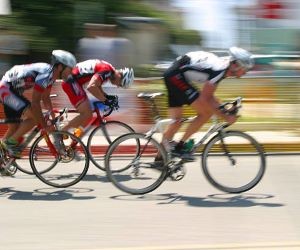Learn how to deal with punctures on long rides with prevention tips, repair techniques, and smart gear choices to keep rolling without stress.
HOW DO I INCREASE LACTATE THRESHOLD IN CYCLING?
Raising your lactate threshold is one of the most powerful upgrades you can make as a cyclist. Whether you’re a weekend warrior or an aspiring racer, understanding how your body processes lactate and how to train specifically for improvements is essential. This article dives into the science, practical workouts, nutrition, and recovery strategies that help you ride stronger for longer.

Understanding lactate threshold in cycling
In cycling, the lactate threshold (LT) represents the exercise intensity at which lactate begins to accumulate in the bloodstream faster than the body can clear it. When you ride below LT, your muscles rely mostly on aerobic metabolism, allowing you to sustain effort for long periods. Once you exceed LT, lactate accumulation causes fatigue to set in more rapidly.
This physiological marker is not only about pain tolerance; it is a data-driven metric that indicates how efficiently your body processes energy. In professional cycling, LT is often considered more predictive of performance than VO2 max because it reflects sustainable power output, not just peak oxygen uptake.
Why lactate threshold matters
Cyclists who improve their lactate threshold can ride at higher intensities without fatiguing quickly. This has direct implications for climbing, time trials, and racing scenarios. The higher your LT power (often measured in watts), the closer it is to your maximum aerobic capacity, which means you can push harder while remaining efficient.
A higher LT allows you to sustain tempo and threshold intervals with less discomfort.
It helps you close gaps or attack in races without blowing up immediately.
Training LT builds resilience for long-distance endurance rides.
It gives clearer guidance on pacing strategies for events.
In short, lactate threshold training is about expanding your redline so that your performance ceiling rises, enabling you to handle sustained high-intensity efforts more comfortably.
Training methods to improve lactate threshold
Cyclists can increase LT through structured training that strategically stresses the aerobic and anaerobic systems. Unlike base endurance rides, threshold-focused workouts challenge your body to adapt to higher levels of sustained effort, improving lactate clearance and delaying fatigue onset.
Interval training for LT gains
One of the most proven strategies is threshold interval training. These sessions push you to ride at or just above LT for specific durations, forcing adaptation. A common structure includes 2x20-minute intervals at 90–100% of FTP (functional threshold power) with 5–10 minutes recovery between sets. Over time, your body learns to handle higher intensities with more efficiency.
Classic 2x20 intervals at threshold pace.
Over-unders: alternating slightly above and below LT power.
Sweet spot training: 88–94% of FTP for extended periods.
Tempo endurance rides: long sessions just below threshold.
Each of these methods stresses the aerobic system differently but converges on the same adaptation: improved tolerance to sustained high-intensity cycling.
Periodization and progressive overload
To maximize LT gains, training must follow progressive overload principles. That means gradually increasing intensity, volume, or duration over weeks. Cyclists should integrate LT intervals within a broader periodization framework: base training, build phases, and peak cycles. This ensures balance between aerobic foundation and threshold development without overtraining.
Monitoring metrics such as heart rate, power output, and rate of perceived exertion helps guide intensity. Many cyclists use FTP tests or lab-based lactate testing to recalibrate zones and maintain progression.
Nutrition and recovery for lactate threshold development
Training alone is not enough to significantly increase lactate threshold. Nutrition and recovery play decisive roles in whether your adaptations stick or fade. Think of LT development as a tripod: stress, fuel, and recovery. Neglect one leg and performance suffers.
Fueling strategies for threshold work
Riding near LT requires significant glycogen stores. Proper carbohydrate intake before and during training ensures you can sustain intensity without premature fatigue. Research suggests consuming 30–60 grams of carbs per hour for LT and above-threshold sessions.
Pre-ride meal: complex carbs and lean protein 2–3 hours before.
During training: gels, sports drinks, or energy chews.
Post-ride recovery: carb-to-protein ratio of 3:1 within 30 minutes.
Daily nutrition: balanced diet with adequate micronutrients.
Cyclists who underfuel often struggle to complete LT workouts effectively, limiting long-term adaptation. Fuel is not just energy—it is the raw material for performance growth.
Rest, sleep, and active recovery
Adaptations to lactate threshold occur during recovery, not during the workout itself. Sleep, rest days, and active recovery rides allow the body to repair and reinforce neuromuscular and metabolic changes. Aiming for 7–9 hours of quality sleep per night, alongside structured rest weeks, helps sustain progress without burnout.
Additionally, modalities like foam rolling, massage, and mobility training can aid recovery and reduce injury risk, enabling consistent training blocks. The best cyclists understand that recovery is training—it’s just the quieter side of the process.
By combining structured threshold workouts, smart fueling, and disciplined recovery, cyclists can systematically increase lactate threshold and elevate their competitive edge. The key is consistency: small, deliberate gains compound over months into significant improvements.
YOU MAY ALSO BE INTERESTED






